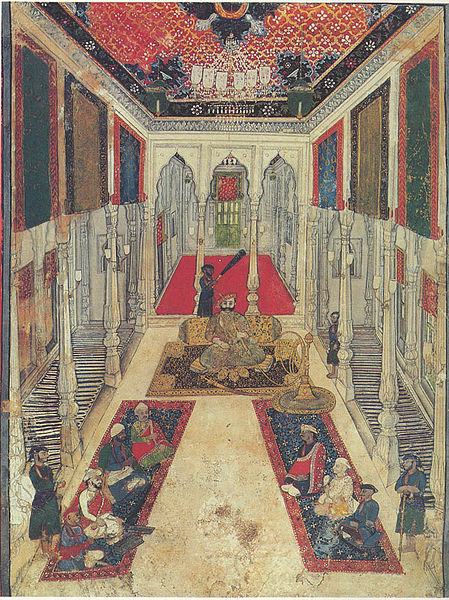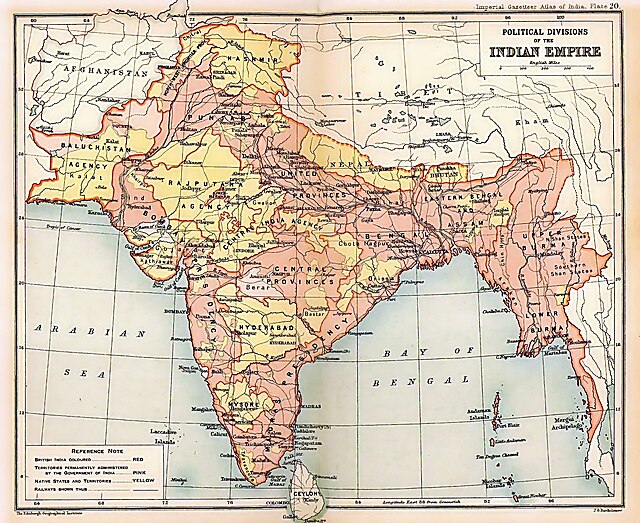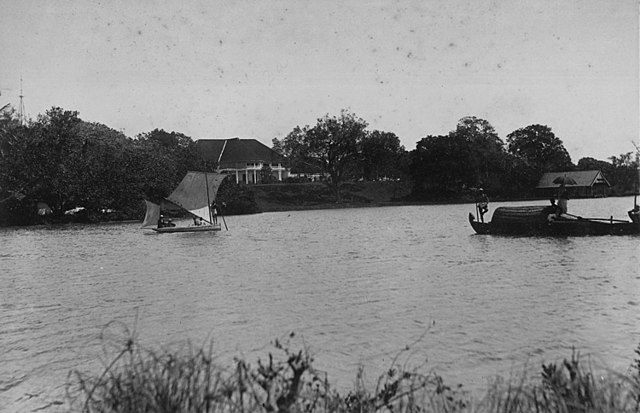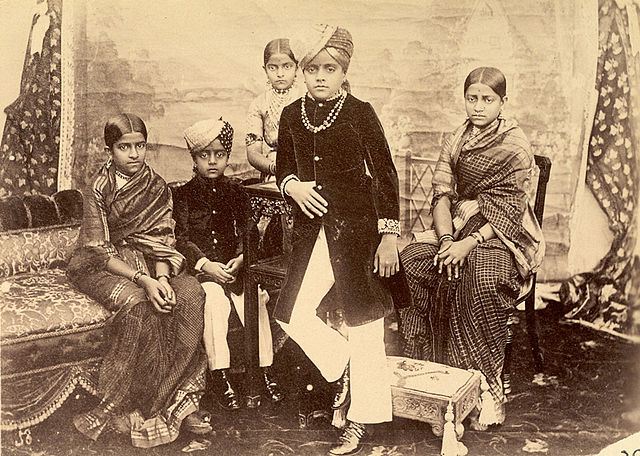A salute state was a princely state under the British Raj that had been granted a gun salute by the British Crown ; i.e., the protocolary privilege for its ruler to be greeted—originally by Royal Navy ships, later also on land—with a number of cannon shots, in graduations of two salutes from three to 21, as recognition of the state's relative status. The gun-salute system of recognition was first instituted during the time of the East India Company in the late 18th century and was continued under direct Crown rule from 1858.
A Maratha Durbar showing the Chief (Raja) and the nobles (Sardars, Jagirdars, Istamuradars & Mankaris) of the state.
HH Maharaja Sir Jayaji Rao Scindia of Gwalior State, General Sir Henry Daly (Founder of The Daly College), with British officers and Maratha nobility (Sardars, Jagirdars & Mankaris) in Indore, Holkar State, c. 1879.
A princely state was a nominally sovereign entity of the British Indian Empire that was not directly governed by the British, but rather by an Indian ruler under a form of indirect rule, subject to a subsidiary alliance and the suzerainty or paramountcy of the British crown.
Political subdivisions of the Indian Empire in 1909 with British India (pink) and the princely states (yellow)
Sayajirao Gaekwad III, the maharaja of Baroda State.
An old image of the British Residency in the city of Quilon, Kerala
An 1895 group photograph of the eleven-year-old Krishnaraja Wadiyar IV, ruler of the princely state of Mysore in South India, with his brothers and sisters. In 1799, his grandfather, then aged five, had been granted dominion of Mysore by the British and forced into a subsidiary alliance. The British later directly governed the state between 1831 and 1881.






